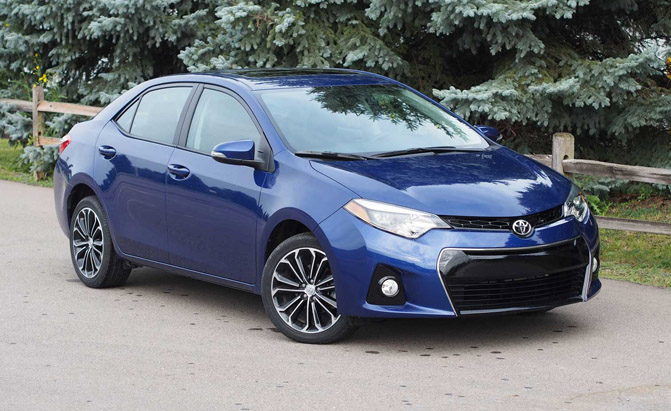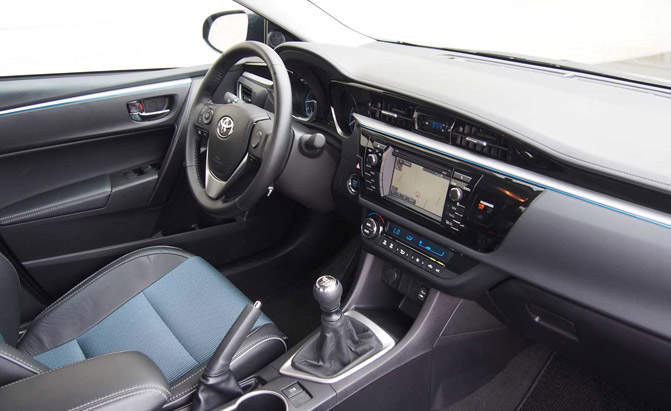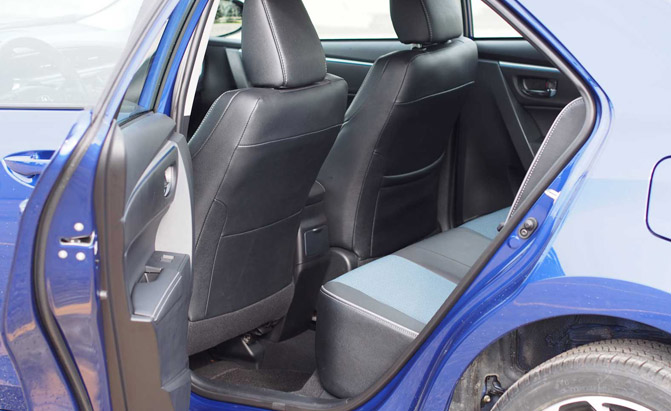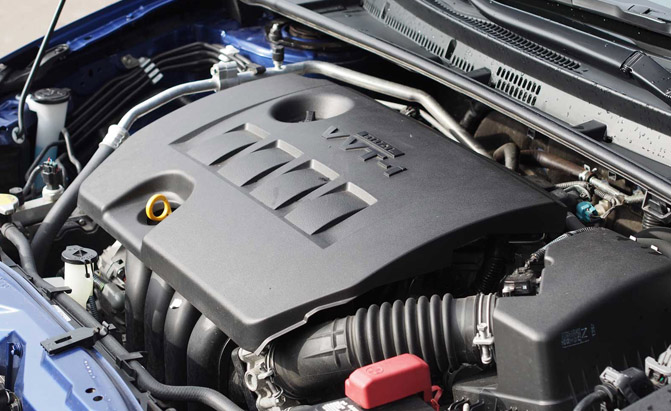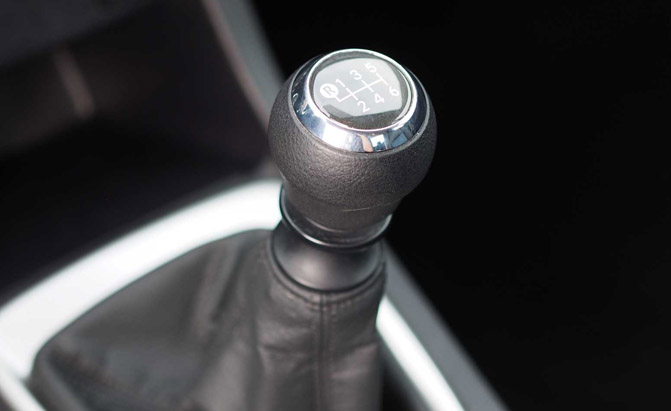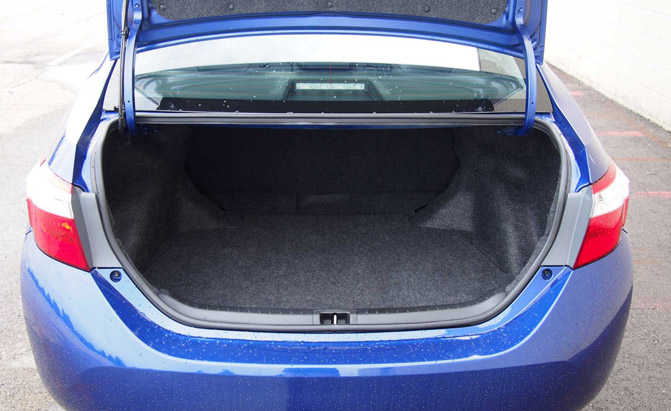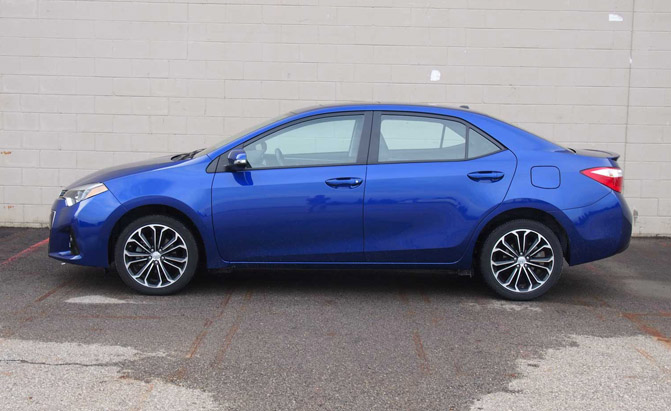Twenty-sixteen is an important milestone for the humble Toyota Corolla, which is celebrating its 50th birthday. It’s hard to believe, but the first examples of this world-famous nameplate were assembled in the fall of 1966.
Of course, much has changed over the last five decades and countless lessons have been learned, but it appears the company has forgotten quite a few as well.
Today’s Corolla looks like it’s assembled from leftover parts. There’s nothing about its exterior appearance that grabs your gaze or gives you the impression that every detail has been sweated over. Based on looks, “good enough” must have been the product-development team’s motto.
The result of all this laurel-resting is product that blends in, completely fades away like dog hair on your comforter or a sniper in a ghillie suit. Of course, anonymity isn’t always a downside. U.S. dealers pushed 363,332 copies of the car out in 2015, 7 percent more than in the preceding year. Clearly, A LOT of American drivers don’t mind living with something as inconspicuous as an orthodontist’s wardrobe.
Judging a Book by Its Cover
As mama always said, don’t judge a book by the dustcover swaddling it. With the Corolla, and any vehicle really, exterior design doesn’t count for much; an attractive body is just icing on the cake so long as the basics are covered. Function, features and efficiency are what count, but unfortunately the Corolla does little to impress in these areas, either.
Just getting in and shutting the door doesn’t leave a good impression. Even when closed lightly they produce a hollow twang, like rapping your knuckle on a sawblade. This is a car, not an instrument in a jug band; it should sound more substantial than a soup can.
Beyond this, the cabin’s overall appearance is pleasingly simple and the secondary controls are easy to figure out. There are even some nice looking soft materials on the dashboard. But make a more diligent appraisal and that initial impression soon becomes suspect.
There’s hard plastic topping the door panels, ready to assault unsuspecting elbows. The airbag cover’s stitches aren’t, rather an injection-molded facsimile. Its digital clock looks like a component robbed from the 1980s. Kisses of chrome on the shifter and control knobs look like a desperate, last-minute effort to spruce things up. This interior is about as cheerful as the cancer ward at a children’s hospital; all it’s lacking are disquieting hand-painted murals of Looney Tunes characters.
But at least it’s roomy. The Corolla’s back seat is huge, with tons of legroom (a claimed 41.4 inches/1,051 mm) and a nearly flat floor. Its trunk is also exceedingly generous (13.0 cubic feet/368 L) with an unexpectedly large opening. Friendly sightlines are another welcome attribute of this compact Toyota; it’s super easy to see out.
The Drive
And that’s about the only positive aspect of its driving experience, aside from the engine, which is silken in its operation.
Displacing a diminutive 1.8 liters, this four-cylinder is refreshingly refined. Unfortunately, it’s the only option in this car, providing just 132 horsepower and 128 lb-ft of torque in L, LE and S trims. For some reason, LE and Eco variants feature 140 ponies and 126 units of twist thanks to the addition of Valvematic variable valve-lift technology.
A six-ratio manual transmission is offered but don’t count your blessings just yet; it was the gearbox our test car was equipped with. You can also get a continuously variable automatic or even a four-speed self-shifter, which painfully underscores Toyota’s conservatism. It’s just another component that could have been stolen from the ‘80s. I think they deliberately avoided installing the tape deck, velour seats and motorized seatbelts in this media review unit, because with a transmission that old-school these features MUST still be offered.
Underway, it doesn’t take more than a few miles to realize there’s plenty to gripe about regarding the Corolla’s on-road performance. For starters, the clutch pedal is far too light. Breathing on it is practically enough to fully depress the thing, which makes driving smoothly a challenge since it’s nigh-on impossible to tell where the engagement point is, meaning every shift feels like it was executed by some novice just learning to wrangle a stick.
Launching this car from a stop requires inordinate attention as there’s precious little torque to be had below 4,000 RPM. Plus, after every shift, something weird happens. The revs seem to fall off faster than they should, meaning you need to feed in generous amounts of throttle as the clutch comes out — it’s a very odd arrangement that’s difficult to describe and even harder to master. I guess my two decades of manual transmission experience just aren’t enough to unlock the Corolla’s secrets…
Speaking of its gearbox, shifts are longer than a cross-country road trip thanks to an inordinately floppy lever. At least it feels friction free, though you might need a navigation system just to find the next ratio as it’s easy to get lost on the way.
When it comes to the steering, well, care to take a guess? Yep, it’s as dead as the residents of a mausoleum. There’s no feedback or excitement, just a ratio that’s syrupy-slow. But hey, at least the Corolla’s interior remains nice and quiet at freeway velocity, it’s just a shame the rear-view mirror in our test car vibrated annoyingly at any speed greater than stopped.
Facts and Figures
Along with its pleasant sight lines, cavernous cabin and roomy trunk, there is one other commendable aspect of the Corolla: fuel efficiency.
Our S Plus tester stickered at an impressive 28 miles per gallon around town. Take the car out for a highway excursion and you can expect 37. Combined, it should deliver 31 miles per gallon. Not surprisingly, Eco models are even more economical, returning up to 42 MPG when properly equipped.
Affordable pricing is another one of the Corolla’s selling points. My decently equipped tester went for $22,430 out the door, including $835 in delivery charges.
It rolled on attractive 17-inch alloy wheels, featured LED low-beam headlights and DRLs, had the usual array of power equipment including electrically operated windows, mirrors and locks, plus it was dressed in gorgeous Blue Crush Metallic paint. This is a deeply saturated hue that really pops when you see it in person.
The Verdict
Perhaps I’ve been too harsh on the humble Corolla. It’s spacious, efficient, affordably priced and practically guaranteed to last longer than Mount Rushmore, which is basically just a huge pile of stone.
On the other hand, my pointed complaints are completely justified. In numerous ways this car feels inferior to practically every other compact offering on the market today. Why would you put up with the Corolla’s dismal driving experience, outdated technology, anonymous styling and low-rent interior when you could own a Honda Civic, Mazda3, Hyundai Elantra or Chevy Cruze? These rivals are stellar options in an increasingly competitive segment, products that make the Corolla nearly impossible to recommend. Toyota’s had 50 years to figure out how to build a class-leading small car yet for some reason they’ve chosen not to.
Discuss this review on our Toyota Forum







